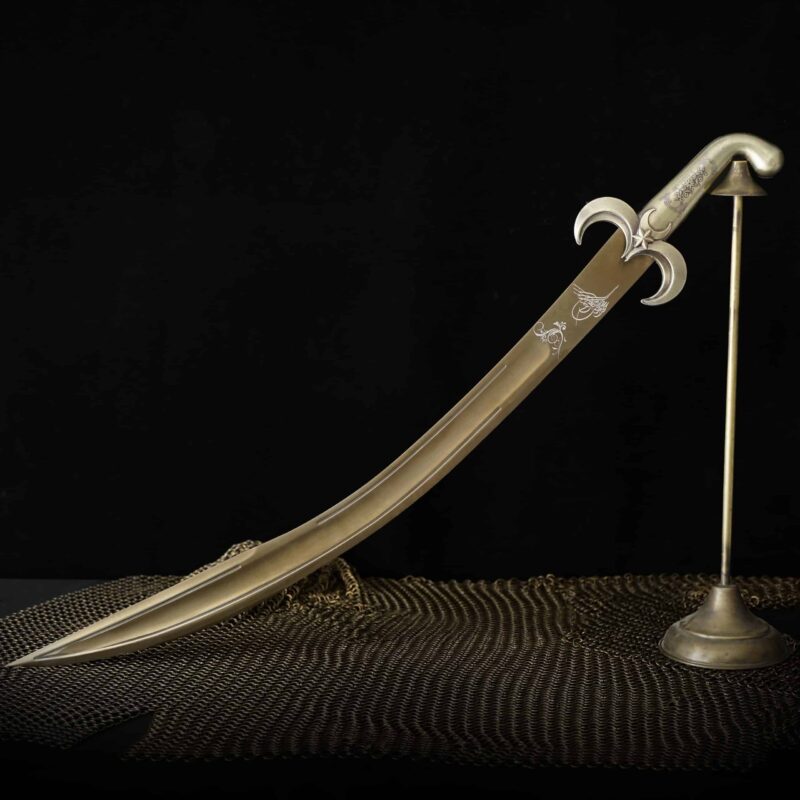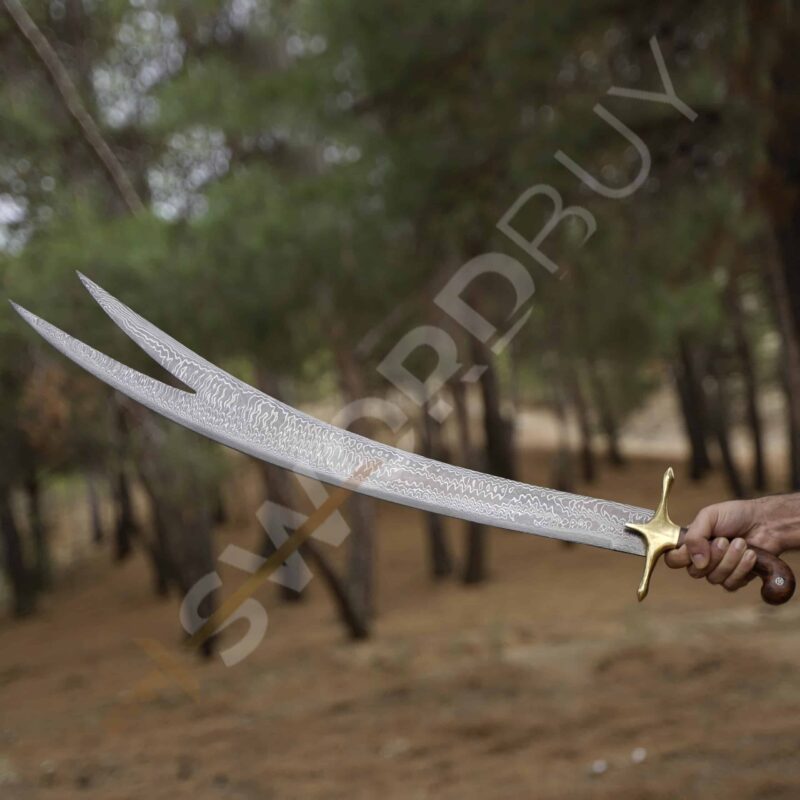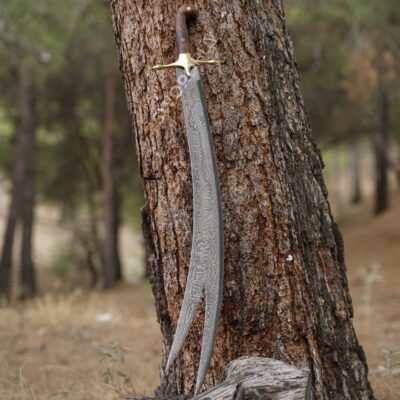The Zulfiqar Sword: History, Significance, and Legacy
The Zulfiqar sword is one of the most famous and revered swords in Islamic history. Known for its distinctive double-edged blade, the Zulfiqar is not just a weapon but a symbol of bravery, justice, and leadership. This article delves into the rich history of the Zulfiqar sword, its cultural and religious significance, and its enduring legacy across the Muslim world.
Historical Background
Origins of the Zulfiqar Sword
The Zulfiqar sword is believed to have originated in the early days of Islam. According to historical accounts, the Prophet Muhammad gifted the sword to his cousin and son-in-law, Ali ibn Abi Talib, during the Battle of Uhud in 625 CE. The sword quickly became associated with Ali’s legendary courage and leadership.
The Battle of Uhud
The Battle of Uhud was a significant event in Islamic history, marking a turning point in the early Muslim community’s struggles. The Zulfiqar sword played a crucial role in the battle, where Ali ibn Abi Talib used it to defend the Prophet and the Muslim army from their enemies. This battle solidified the sword’s status as a symbol of divine protection and strength.
The Symbolism of the Zulfiqar Sword
A Symbol of Justice and Courage
The Zulfiqar sword symbolizes justice, courage, and righteousness. Its unique design, featuring a bifurcated blade, represents the dual aspects of physical and spiritual strength. In Islamic tradition, the Zulfiqar is often associated with the concept of divine justice, as wielded by Ali, who is revered as a paragon of virtue and wisdom.
Religious Significance
In Shia Islam, the Zulfiqar holds special significance as it is closely linked to Imam Ali, the first Imam and a central figure in Shia belief. The sword is a symbol of Ali’s rightful leadership and his role as the protector of the Muslim community. It is also seen as a representation of the spiritual authority passed down through the Imams.
The Legacy of the Zulfiqar Sword
Influence on Islamic Art and Culture
The image of the Zulfiqar sword has been a popular motif in Islamic art and culture. It is often depicted in calligraphy, paintings, and jewelry, symbolizing the enduring legacy of Ali and his principles. The sword’s image can be found in mosques, religious texts, and various cultural artifacts across the Muslim world.
The Zulfiqar in Modern Times
Today, the Zulfiqar sword remains a potent symbol in many Muslim communities. It is used in religious ceremonies, parades, and as a symbol of resistance and resilience in the face of oppression. The sword continues to inspire and unite Muslims, serving as a reminder of their rich heritage and shared values.
Technical Specifications and Design
Unique Blade Design
The Zulfiqar sword is renowned for its distinctive blade, which features a bifurcated, or forked, tip. This design is both symbolic and functional, allowing for a unique method of combat. The double-edged blade is typically made of high-quality steel, showcasing the craftsmanship and technological advancements of the time.
Craftsmanship and Materials
The construction of the Zulfiqar sword required exceptional skill and expertise. Master swordsmiths would meticulously forge the blade, ensuring its balance, sharpness, and durability. The hilt of the sword is often adorned with intricate designs and inscriptions, adding to its aesthetic and symbolic value.
The Role of Zulfiqar in Islamic Warfare
Ali’s Military Achievements
Ali ibn Abi Talib’s prowess in battle is legendary, and the Zulfiqar sword was a key element in his military successes. Known for his strategic acumen and bravery, Ali used the Zulfiqar to lead the Muslim armies in numerous battles, including the Battle of Khaybar and the Battle of the Trench.
The Sword as a Strategic Weapon
The Zulfiqar sword was not only a tool of warfare but also a symbol of psychological warfare. Its reputation as a weapon of divine intervention often struck fear into the hearts of opponents, giving the Muslim armies a strategic advantage in battles.
Cultural Impact of the Zulfiqar Sword
Representation in Literature and Folklore
The Zulfiqar sword has been immortalized in literature and folklore, appearing in poems, stories, and religious texts. It is often depicted as a magical weapon, capable of vanquishing evil and upholding justice. The sword’s legendary status has made it a central figure in many cultural narratives.
Influence on Modern Iconography
The Zulfiqar’s image is widely used in modern iconography, particularly in flags, emblems, and insignias. It is a powerful symbol of resistance and defiance against tyranny, embodying the spirit of freedom and justice. The sword’s image is also used by various organizations and movements as a symbol of their commitment to these ideals.
Comparative Analysis: Zulfiqar vs. Other Historical Swords
The Sword of Charlemagne
The Zulfiqar can be compared to other legendary swords in history, such as the Sword of Charlemagne, also known as Joyeuse. Both swords are revered as symbols of leadership and authority, representing the power and legacy of their respective wielders.
Excalibur: The Legendary Sword of King Arthur
Excalibur, the mythical sword of King Arthur, shares similarities with the Zulfiqar in terms of its legendary status and symbolism. Both swords are associated with divine intervention and the rightful leadership of their bearers, serving as enduring symbols of justice and valor.
Preservation and Exhibitions
Museums and Collections
Many replicas of the Zulfiqar sword are preserved in museums and private collections worldwide. These exhibits showcase the sword’s historical significance and artistic craftsmanship, offering a glimpse into the rich cultural heritage of the Islamic world.
Efforts to Preserve Historical Artifacts
Efforts to preserve historical artifacts like the Zulfiqar sword are crucial in maintaining the cultural and historical legacy of the Muslim world. These initiatives ensure that future generations can learn from and appreciate the rich history and symbolism of such iconic artifacts.
Conclusion
The Zulfiqar sword is more than just a weapon; it is a symbol of justice, courage, and leadership. Its rich history and enduring legacy continue to inspire and unite people across the Muslim world. As a testament to the values of bravery and righteousness, the Zulfiqar remains a powerful symbol of the Islamic heritage and its timeless principles.





